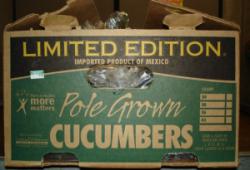Cyclosporiasis is an intestinal illness caused by the protozoan parasite Cyclospora cayetanensis, which is transmissible by ingestion of food or water contaminated with sporulated oocysts. Most cases of cyclosporiasis occur in underdeveloped tropical and subtropical regions of the world where the parasite is endemic. As international travel becomes more frequent, so does the risk of acquiring microbes in industrialized nations where they are not endemic, as is the case for Cyclospora. In fact, the parasite was first recognized as causing “travelers’ diarrhea” in individuals returning from such areas.
Cyclosporiasis acquired in the United States (as opposed to cases acquired in association with travel to a country that is endemic for Cyclospora) is reported throughout the year but tends to trend with higher counts in the spring and summer months. The oocysts associated with Cyclospora can survive for weeks to months in water and food, depending on the environmental temperature. There is variability in this timing, but reports of illness tend to increase starting in May.

In other countries, surveillance data and studies suggest an increase in Cyclospora cases that correlate with the rainy season, such as in Nepal, Haiti, and Peru. Prevalence studies in these areas also suggest that children younger than 18 months are less likely to display symptoms when infected, while children over 18 months and persons not native to the area are more likely to display symptoms when infected.
In North America, outbreaks of cyclosporiasis in humans have been reported mostly from contaminated fresh food products, such as soft fruits (raspberries, blackberries, and strawberries), leafy vegetables (lettuce and mixed salad), and herbs (basil and cilantro). Soil is another possible infection source, particularly in areas with poor environmental sanitation. In the mid-1990s, several seasonal outbreaks in North America were associated with fresh raspberries imported from Guatemala. After two years of outbreaks, the United States Food and Drug Administration (FDA) placed a ban on the import of raspberries grown in that country. The United States did not see additional outbreaks, while Canada, which had not banned the import of Guatemalan raspberries, continued to have Cyclospora outbreaks.
In 2013, 631 cases of Cyclospora were reported in North America, with the epidemiology and traceback leading to suppliers in Puebla, Mexico. Recurring outbreaks in cilantro from that same region led the FDA to stop importation from that region as well. These recurring seasonal outbreaks are likely occurring because Cyclospora is endemic in these growing regions. Validated molecular typing tools, which could facilitate detection and investigation of outbreaks, are not yet available for C. cayetanensis.

The CDC has been conducting national surveillance for cyclosporiasis since it became a nationally notifiable disease in January 1999. As of 2015, cyclosporiasis was a reportable condition in 42 states, the District of Columbia (DC), and New York City (NYC). Health departments voluntarily notify the CDC of cases of cyclosporiasis through the National Notifiable Diseases Surveillance System (NNDSS) and submit additional case information using the CDC cyclosporiasis case report form or the Cyclosporiasis National Hypothesis Generating Questionnaire (CNHGQ).
In 2020, multiple outbreaks of cyclosporiasis were identified and found to be linked to various produce items. As of September 23, 2020, the CDC documented 1,241 laboratory-confirmed cases of cyclosporiasis in people who had no history of international travel during the 14-day period before illness onset.